Happy Thanksgiving!
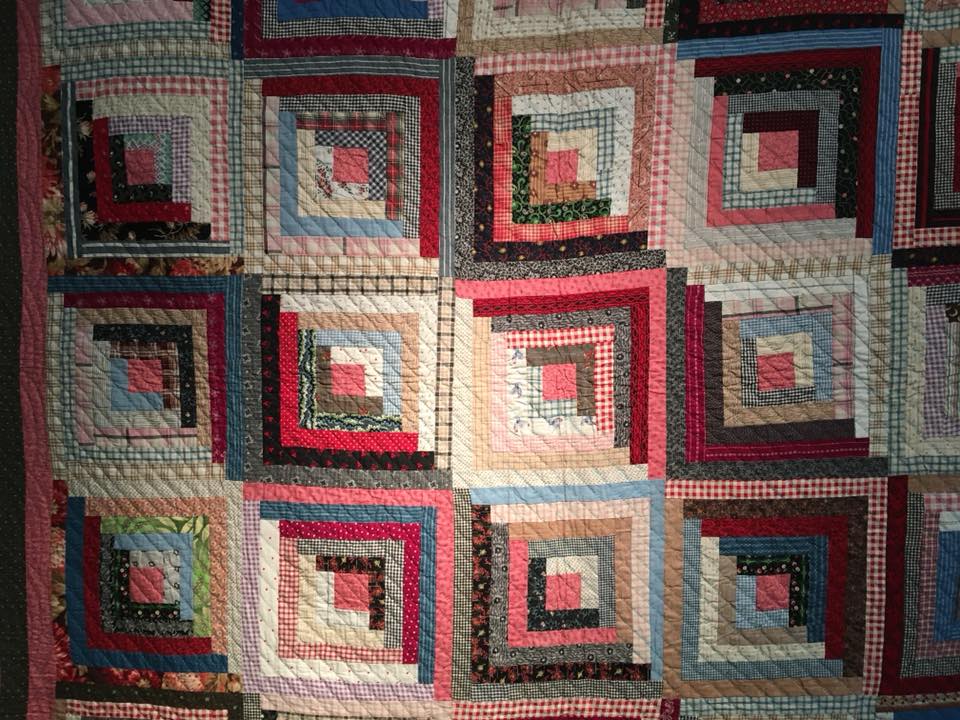
Even in 2020 there is much for which to be thankful! We are thankful for the art of quilting and all of the folks who have contributed to the world of quilting over the years!
Happy Thanksgiving!

Even in 2020 there is much for which to be thankful! We are thankful for the art of quilting and all of the folks who have contributed to the world of quilting over the years!
Happy Thanksgiving!
If you own a fascinator, now is the time to wear it; get out your white gloves too because we’re going to meet the Queen. Queen Bertha Stenge, that is—the 1930s-40s “Queen” of Chicago quilting.
Of all the blogs I’ve written so far, this may be the hardest for two reasons. The first is that I have been championing a Stenge contemporary who was also from Chicago, and I don’t like to see my favorite upstaged. (I wrote about Mary Gasperik back in September, and she’ll be the Heritage Honoree at the 2021 Celebration, so it’s all good.) The second and more difficult reason is that there’s not much written about Bertha Stenge. Where were the paparazzi for this queen? Let’s see if we can remedy the dearth of coverage.
You can read Bertha Stenge’s biography on the Hall of Fame website (link below) and there are a few other places where her basic info is available. But it’s all very basic, mostly her many awards—not fitting for a queen at all! In fact, of the >250 articles mentioning her on Newspapers.com, almost a third told the same story of how she began quilting during an illness, kept at it for 25 years, and hoped to complete 50 quilts before she was done. Another third used her quote about young women of her day being too impatient to quilt—“too restless”. Most of the remaining entries gave a bare report of her placement in the local fair or quilt show. But I persisted, and found a few interesting tidbits to talk about.
Let’s start out with two of the most famous Stenge quilts, “The Quilt Show” and “The Quilting Party”.
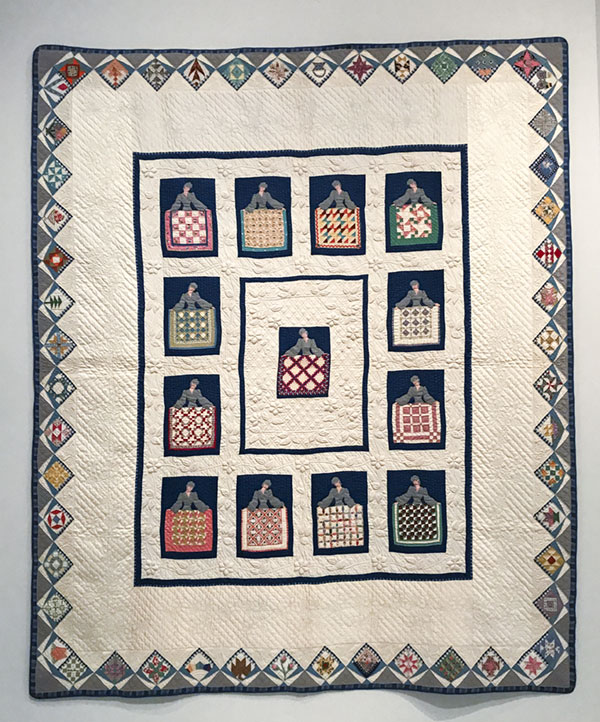
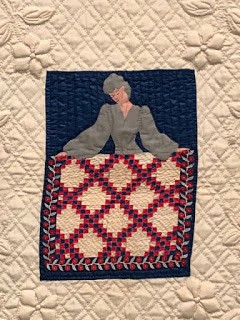
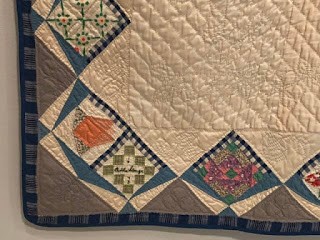
A few things to note about this quilt-once you get over being gob-smacked by the detail. (All thirteen quilts are actually pieced.) I love the floral motifs in the double-rodded cross hatch quilting; and then the switch-up in the wide white border to signal that these quilts are in the winner’s circle. This is that kind of attention to detail that puts a jewel in Queen Bertha’s crown. Stenge didn’t always do her own quilting, but I feel sure she designed or at least specified the pattern. And use of trapunto became a signature element for her after her first few quilts.
Is it fanciful to think that the Irish Chain quilt in the center is “Best of Show”? It’s the only mini that has a border, so I like to imagine Bertha consciously gave it pride of place if not a ribbon. And she didn’t stop with the central images; she continued her detail into the border motifs, creating a showcase of other blocks that might be seen at a quilt show. These could easily compete with some Dear Jane quilts. And showing that even queens can have a sense of humor, Stenge has signed the quilt in a traditional album block.
“The Quilt Show” above is in the permanent collection of the Art Institute of Chicago, and you can see their other Stenge holdings at the link below. The next quilt, “The Quilting Party” is at the Illinois State Museum along with several other Stenge quilts, and there’s a link for that too. And while you’re in the link section, you’ll see one for the Chicago History Museum which owns Stenge’s 1933 World’s Fair quilt; it has an unusual quilting pattern which is definitely worth seeing. So, let’s go to the party.
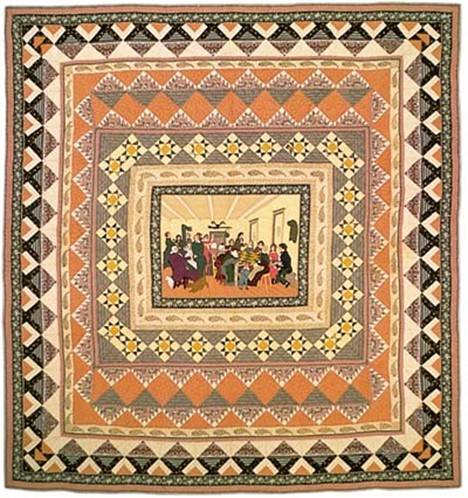
This is another quilt where detail reigns supreme. I saw this beauty in person about five years ago. Look at some of the tiny, precise additions which add so much to the “picture” in the middle.
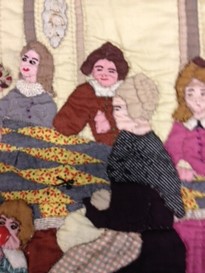
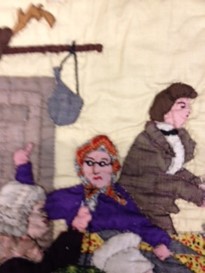
The center alone would have been a tour de force, but again, Stenge doesn’t stint in the borders. How many can you count? And here are some detail shots I took of the fabrics:
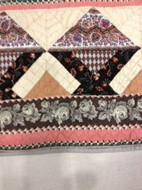
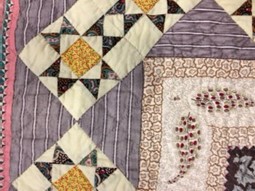
You’ll have noticed that the yellow and red print in the star centers on the right is the same as that used on the “quilt” in the center. Once again, Bertha is winking at us. But the fabric also provides a segué into another interesting aspect of Stenge’s quilting career, and that is her friendship with Florence Peto (another Hall of Fame Honoree) and others. Bertha and Florence lived in different states but stayed in touch through letters.
It’s said that Florence Peto was instrumental in convincing Bertha Stenge to work in traditional and center-medallion style. I’m not sure how much convincing Stenge required; her earliest works are pretty traditional. But I do know that Peto played a big part in getting Stenge to use historical fabrics like that purple stripe in “The Quilting Party”. Peto often instigated round robins or supplied fabric and challenged Stenge and her other pen pals to use it in a quilt. Take a look at the sashing in this Sawtooth Star quilt that Stenge made. Those of you who are quilt historians will recognize that wavy stripe and brownish-reds as being old (maybe 1870s?), and it’s just the kind of thins Peto used and shared.
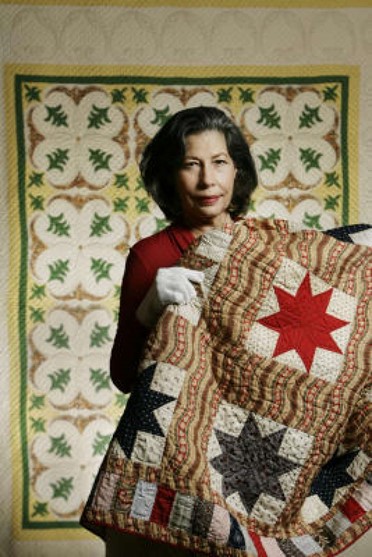
We can also look at another example, “Gazelle”, and wonder if some of the fabric came from Peto. Here’s the photo I took at the Intenational Quilt Museum. The first detail has fabric in three colorways, and could have been a challenge. I don’t know what to think about the floral in the second one because Stenge seems to generally rely on solids and tone-on-tones; this could have come from Peto, but there’s no proof. Either way, my heart warms with the thought of these ladies sending around their quilting missives, sharing their progress much like we do today online. And who wouldn’t want to be the Queen’s correspondent?
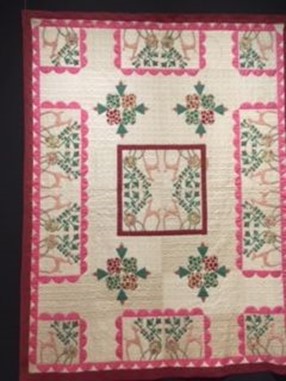
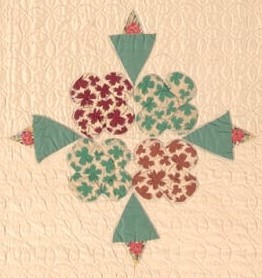
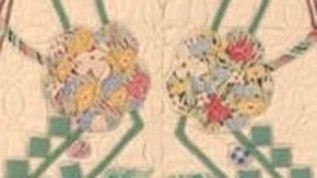
As an aside, “Gazelle” was made from a newspaper pattern—something unusual for Stenge who largely favored her own original designs.
No discussion of Bertha Stenge is complete without mention of her artistic talents. Here are some examples of how she used her formal art education in her quilting.
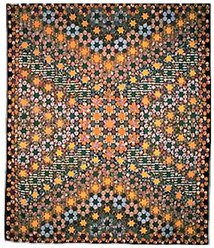
This quilt is pieced in a secondary palette of purple, orange and green, showing a good grasp of the color wheel, and inverts the central medallion format in a way that is innovative while still being controlled. Stenge made other hexagon quilts which can be seen in the Illinois State Museum collection.
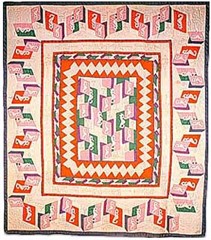
Here’s a quilt that shows how Stenge could break out from her traditional preferences and emulate the Art Deco Style. It’s also whimsical with blocks representing sardine cans, and celery and tin-opening keys in the quilting. (OPA was in charge of rationing during World War II.)
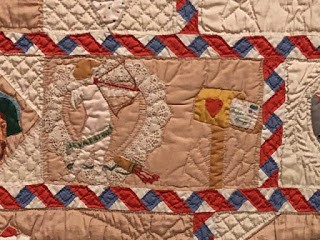
And speaking of whimsy, look at this detail from “American Holidays”; the Valentine is being mailed to Bertha Stenge! The Queen can poke fun at herself.
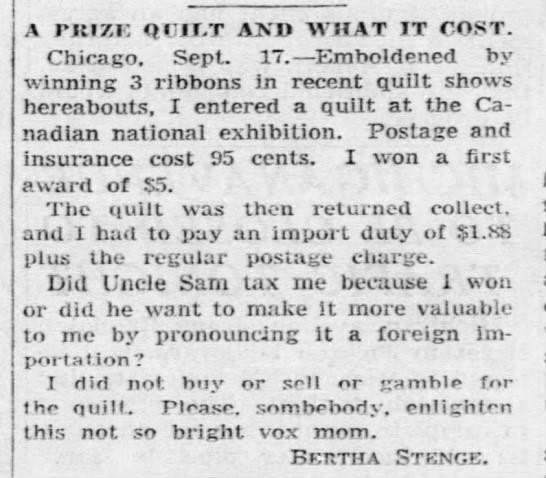
What? The Queen pays taxes? Well, at least she was a good sport about it and saw the ironic side of things. Stenge didn’t compete for the prize money (her biggest award was put into war bonds).
I’m going to wrap up with my favorite Bertha Stenge quilt, Iva’s Pin Cushion. I love the subtle coloring and design symmetry, and the trapunto work and quilting are exquisite.
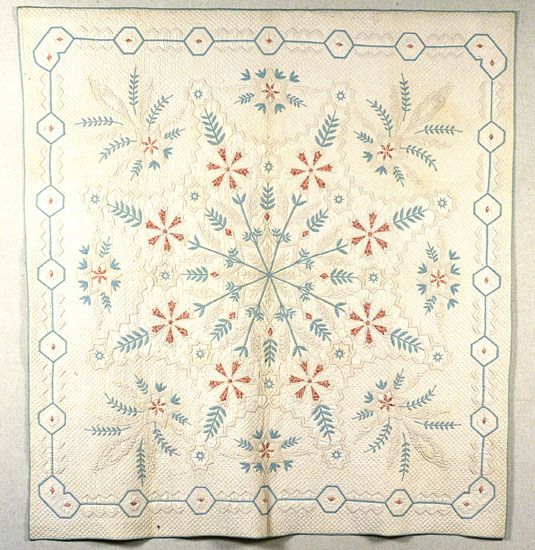
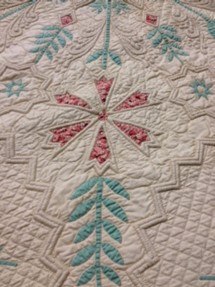
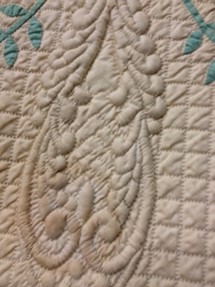
Well, I hope you’ve enjoyed this visit with Bertha Stenge. Do you agree she earned the title of “Queen”? She showed humor, a quick wit, a command of her art, and loyalty to friends. To top it off, she was modest (“The two things you need most in making quilts are plenty of patience and a warm iron.”). That adds up to regal in my book.
Your quilting friend,
Anna
Hall of Fame bio https://quiltershalloffame.net/bertha-stenge/[AH1]
Wasserman blog http://annquiltsblog.blogspot.com/2018/06/quilts-at-art-institute-of-chicago.html
Art Institute of Chicago collection https://www.artic.edu/artists/36792/bertha-stenge (I was puzzled by the name of one of these quilts, Toby Lil; then I read that it represents English crockery known as “Toby” jugs and was named for or given to a friend, Lillian.)
Illinois State Museum http://www.museum.state.il.us/ismdepts/art/collections/daisy/gallery.html
Chicago History Museum Century of Progress World’s Fair quilt https://collections.carli.illinois.edu/digital/collection/chm_museum/id/3197/rec/2
I hope the Michigan tourism office doesn’t mind my referencing their slogan as I write about an Honoree from their State. Maybe after reading this, you’ll want to visit some of Mary Schafer’s quilts in East Lansing, so I think it’s a legitimate use. But before we “travel” to the Great Lakes/ Wolverine/ Mitten state, there’s some unfinished business from my earlier blog about Carrie Hall.
You may remember that I told you about the magazine article I purchased on eBay. Well, it arrived, and I can share it with you. First off, it cleared up a misconception I had: Hall actually had two, not one, periods of doll dressing. I wrote about her latter-day making of historical dolls, but she had an earlier period of making fashion clothes for 27-inch mannequins. I’m not sure whether/ how she used these dolls to promote her couture business, but they coincide with her dress-making career.
The magazine article is written by a doll collector who won several of Madam Hall’s creation at an auction. Before the auction, the author read up on Carrie Hall; he learned all the facts I told you plus he found a weak clue that Hall had designed clothes for Susan B. Anthony. At the auction, he chose to bid on dolls that he thought were most representative of the fashion trends that Hall had written about in her book “From Hoopskirts to Nudity”. Here’s what he came away with (remember, these are 27 inches):
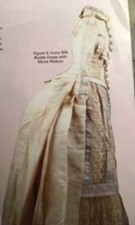
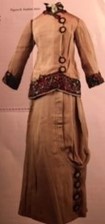
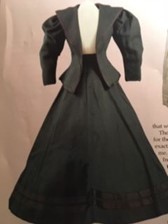
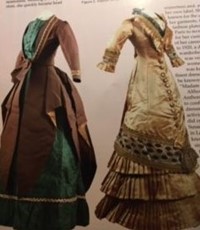
Some week, I want to take a side trip into the connection between fashion and quilting, but right now it’s time to move on to Mary Schafer. You can read her bio at the link below. You can also learn more from someone who knew and worked with Mary through these books, available on Amazon and many other sites.
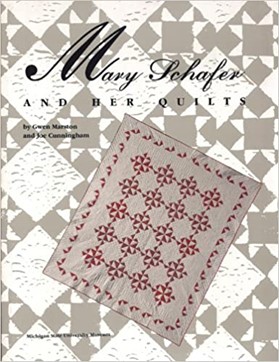
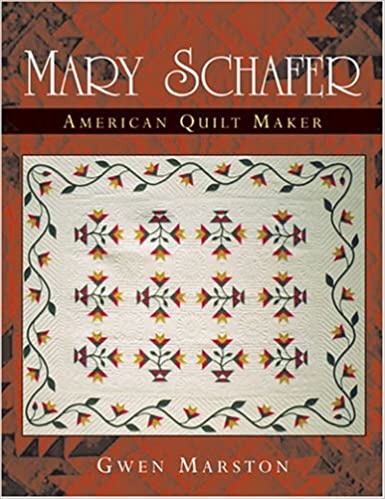
Although Mary was trained in needle arts as a child, she didn’t take up quilting until her forties. She bought a quilt kit (design unknown), but was daunted and returned it to the store. A few years later, she decided to try again, and made a Rhodendron quilt similar to this top (which I would have found daunting as well, but she persevered):
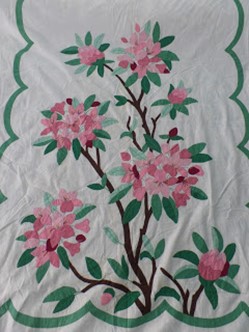
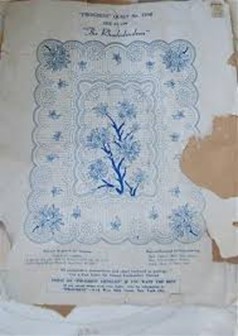
But Mary’s real journey into the world of quilting and quilt history for which she is famous, came from restoring and then replicating an old quilt that her son had used at a beach party. That set her on the path of researching old quilt patterns and making copies of them. For example, Mary discovered a picture of this quilt in Florence Peto’s “Historic Quilts” and she made a copy as a tribute to her. Peto wrote back (they were regular correspondents, and Mary also exchanged letters with Hall of Fame Honorees Joyce Gross and Lenice Bacon) saying, “Do you know I have never seen another ‘Lobster’ quilt since the one pictured in “Historic Quilts”; I am happy to know you are keeping the design alive.” I, too, have never seen another “Lobster”, so I question whether the design is still alive. Does anyone out there want to revive it?
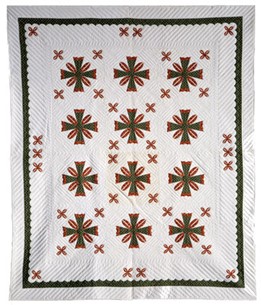
I usually include more photos from the Quilt Index when I write, but there are too many to choose from, so I’ll suggest that you browse on the link below. Some of the quilts are made by Mary, some are ones she finished, largely with blocks and tops made by her pen pal, Betty Harriman, and some that Mary collected herself. Here’s a photo from the Alliance for American Quilts showing Mary working on some of the odds and ends she preserved.
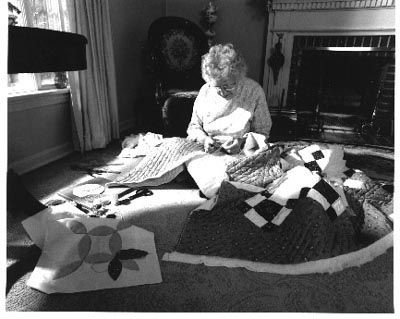
Michigan State University Museum acquired part of her collection–developed over a period of 40 years–of more than 200 quilts plus quilt tops, fabrics, and quilt blocks representative of most quilt styles and periods in American history. They have a traveling exhibit available for a fee if your guild is interested. The exhibit was shown at the Mercer Museum in Doylestown, PA a few years back, and it was visited by several bloggers (not me, sadly); check out their sites—links below– for some good views of Mary’s work.
The Quilters Hall of Fame has over a dozen blocks that are the result of Mary’s very active round robin participation, two quilts finished by Schafer and an unfinished partial quilt top. You can see these at the link below, but I also want to show you this quilt that Mary called “Single Chain and Knot.
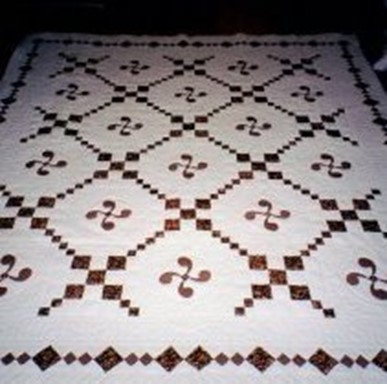
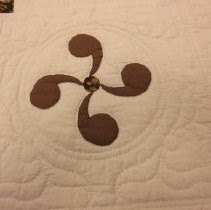
Our Collections description says of the knot: “This design resembles a Pennsylvania Dutch fylfot.” It could also be called a lauburu or Basque cross, a traditional celtic hooked cross with four comma- -shaped heads. Today, Lauburu is a symbol of the Basque region; it is also associated with Celtic peoples, most notably Galicians and Asturians.
If there’s one thing that got Mary Schafer into the Hall of Fame, I think it must have been her message of quilting as being worthy of respect. She started making, collecting, studying and talking about quilts in that doldrums period after World War II and the Whitney Museum exhibit. She quietly (but publicly) went about the business of telling us that we should honor our work. She lived by the words of Marie Webster in “Quilts: Their Story and How to Make Them” : “To raise in popular esteem the most worthy products of home industry, to add to the appreciation of their history and traditions, to give added interest to the hours of labor which their construction involves….” I don’t know about you, but sometimes that message gets lost for me—like when I’m bored from making 96 half square triangles—so it’s good to have Mary Schafer to remind me that I’m engaged in a meritorious pursuit. Others will talk about the beauty of quilts (and Mary did as well) or the creativity involved, but sometimes it’s enough to think about diligence and competence in the process. Yes! Thanks for that, Mary Schafer.
Your quilting friend,
Anna
Bio https://quiltershalloffame.net/mary-schafer/
Mercer Museum exhibit photos on Dawn’s blog http://collectorwithaneedle.blogspot.com/2017/05/the-mary-schafer-collection.html
Mercer exhibit on Triplett’s blog https://www.quiltandtextilecollections.com/blog/the-mary-schafer-collection-a-legacy-of-quilt-history
More Mercer photos http://www.quiltyhabit.com/2017/07/visit-to-mercer-museum-mary-schafer.html
Quilt Index, Mary Schafer Collection https://quiltindex.org/view/?type=specialcolls&kid=12-91-471
Hall of Fame Schafer Collection https://quiltershalloffame.pastperfectonline.com/webobject?utf8=%E2%9C%93&search_criteria=%22Mary+Schafer%22&searchButton=Search
While doing some research today, I came across this story in Ruth Finley’s book, Old Patchwork Quilts and the Women Who Made Them. While discussing antiques and their ability to defy age, wear, and tear, Ruth writes about her Aunt Thankful’s sheets.
There is scattered among the members of my family a set of twenty-four sheets, discolored but unworn, spun and woven from flax grown in the Connecticut hills. The pair that belongs to me is marked No. 12. Under the numbers are embroidered a heart and the initials T. S. The whole marking is so delicate that it covers, in the upper right hand corner of each sheet, less than a square half-inch of space. It is executed in cross-stitch done in a woman’s hair.
Thankful Smith was the twin sister of a greatly removed grandmother. The two girls each spun, wove and marked for their dower chests twelve pairs of linen sheets, while waiting for their lovers to come back from war. The betrothed of the twin who was my ancestress came home. She was married; and her children and her children’s children wore out her dower sheets. But Thankful’s lover never returned. Visiting among the family households as the patient drudge that was the role of the spinsters of her day, Thankful had no need for the domestic linen of a home. The dower sheets she had marked with bridal hearts in her own hair were never used. They are today as smooth and fine and strong as the day they left her loom.
Finley, Ruth E. Old Patchwork Quilts and the Women Who Made Them. Philadephia: J.B. Lippincott, 1929. Reprint 1970, pp 24.
If you would like to read more about Ruth Finley her biography is here: https://quiltershalloffame.net/ruth-finley/
In looking for material for this week’s post, I noted an article in American Quilter titled “Thread Witch: The Magic Artistry of Ruth B. McDowell.” I was unable to locate and read the article, but the label for this Honoree stayed with me as I looked at her work. She really cast a spell on me, and I think you will be enchanted as well.
As a professional artist, all of Ruth’s art quilts as shown on her web site and in this article are unique one-of-a-kind pieces. They may not be copied, reproduced, or reprinted without specific written permission from Ruth. No patterns for these quilts are available. You may not attempt to make your own pattern from these images. This is exactly the same copyright as in the world of paintings.
Ruth McDowell is a trained artist with a Massachusetts Institute of Technology B.S. in Art and Design and a brief stint as a technical illustrator in the late 1960s and early 1970s. She started quilting with traditional blocks, and her first books follow this theme.
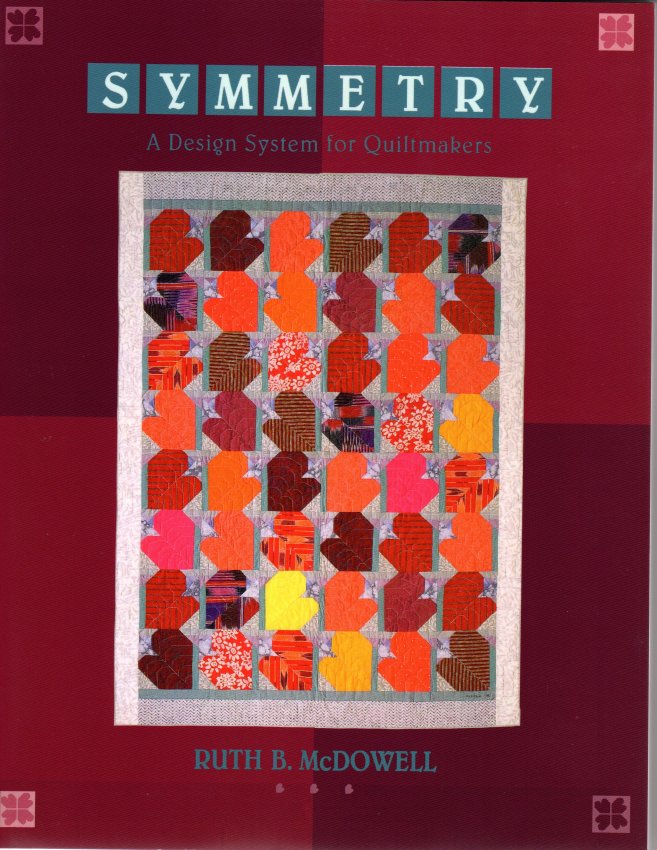
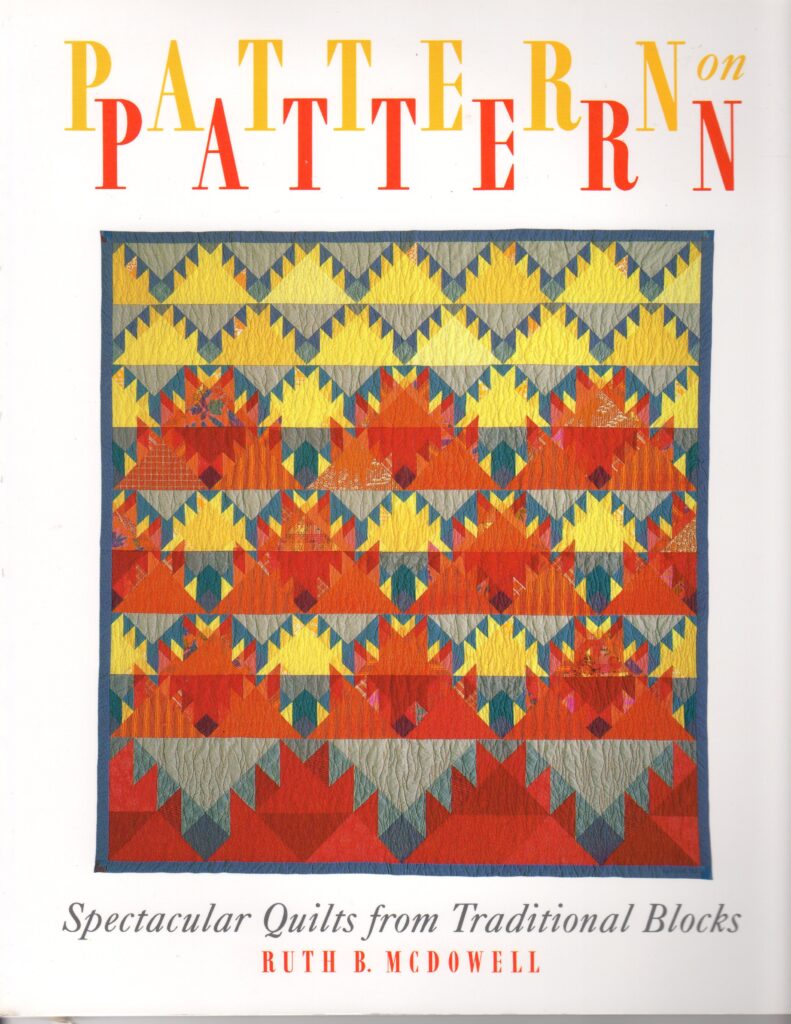
But then she found Ruby Short McKim (another Hall of Fame Honoree who published quilt designs during the Depression). Or, at least that’s what Ruth says: “I was fascinated with the designs I found in Ruby McKim’s 1931 book, 101 Patchwork Patterns. Her original blocks based on poppy, iris, rose and trumpet vine were graphically interesting, botanically recognizable, and straightforward to piece with traditional methods…. The trumpet vine I found especially fascinating.”
Well, I wondered about that, because the line from McKim’s designs to McDowell’s quilts is anything but a straight one. Look at these three side-by-side comparisons and tell me if you see any connection.
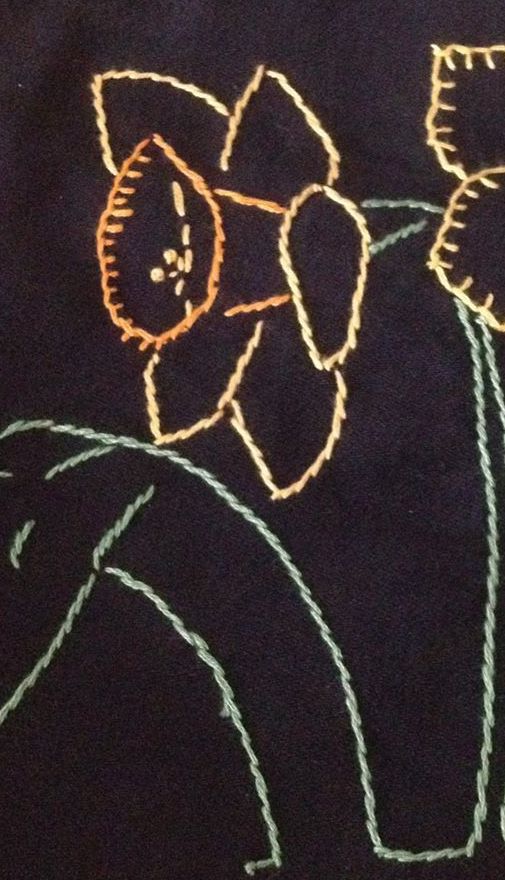
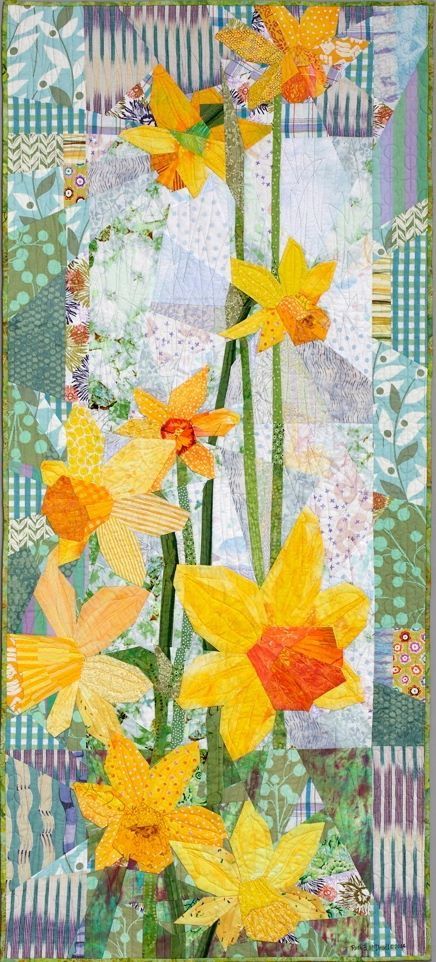
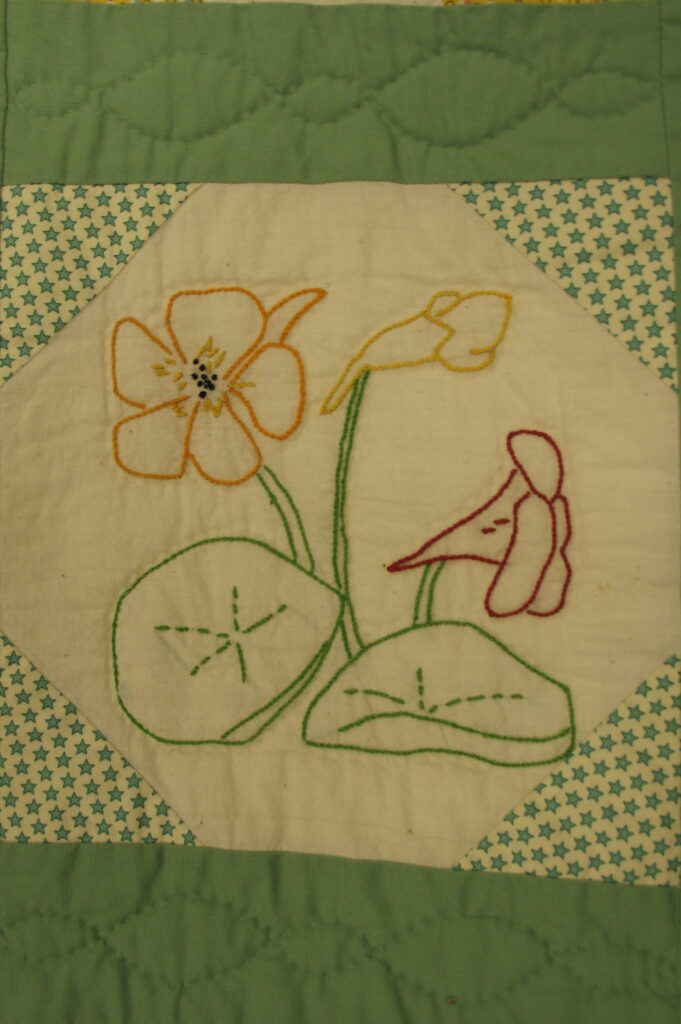
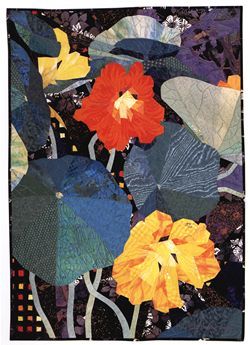
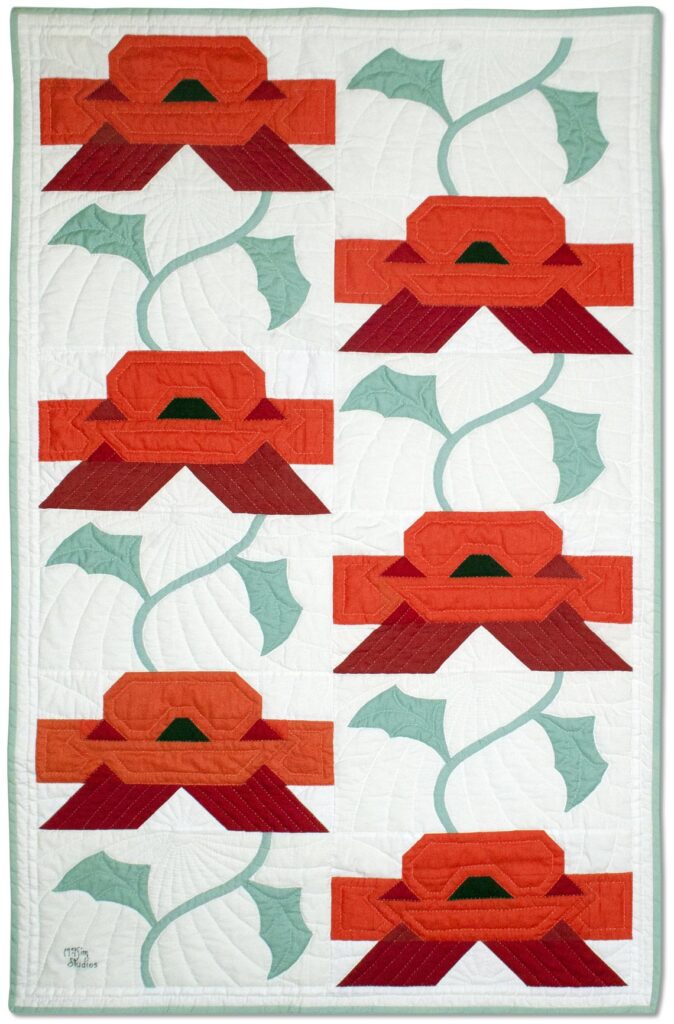
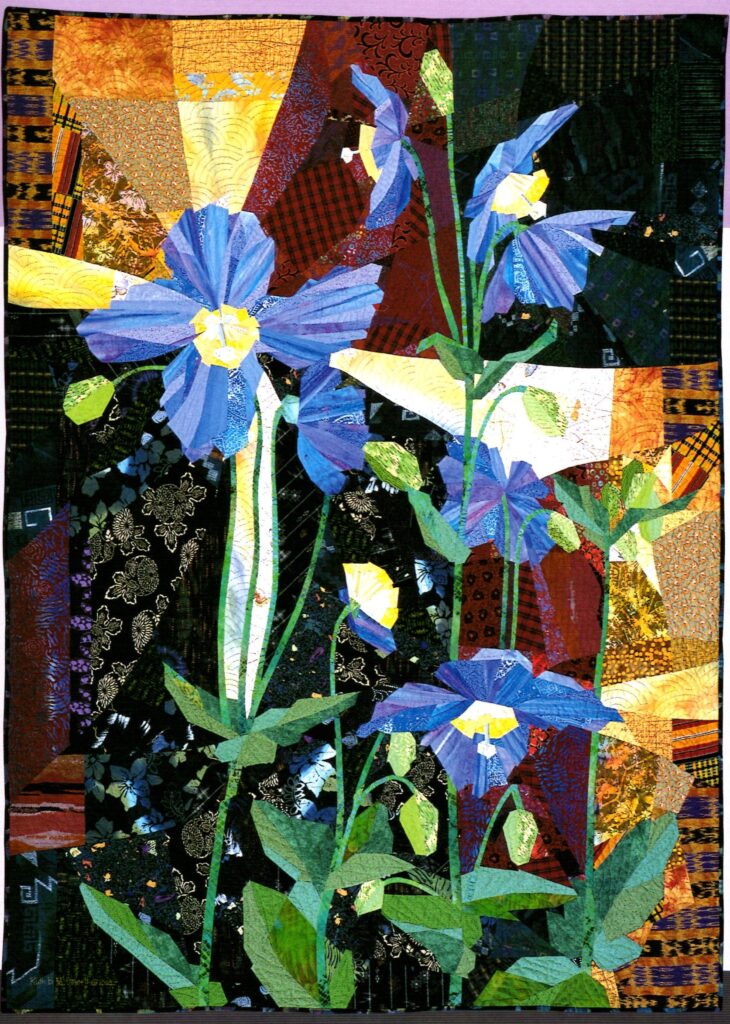
Yes, in both versions the Daffs nod, the Nasturtium leaves retain the pentangle veins, and the Poppies have tall stems. But McDowell has taken McKim’s simple shapes and turned them into something completely different. And if that isn’t witchcraft, I don’t know what is.
Like most magic-workers, McDowell has some secrets up her sleeves. But they aren’t really secrets; she has shared her methods in ten books. I own Fabric Journey: An Inside Look at the Quilts of Ruth B. McDowell, and although I’ll probably never make a McDowell-style quilt, the text is perhaps the most self-revealing I’ve run across in the quilting world. And this openness seems typical of McDowell; for example, many of the photos on her website (link below) are accompanied by a personal comment, a tip, a little story about her inspiration source, etc. You don’t ever need to ask “What was she thinking?”—Ruth will tell you!
And, in addition to the wonderful quilt pictures and artist’s commentary, Fabric Journey gives me a little insight to the McKim/McDowell connections. I can look at McDowell’s line drawings in the book and see the similarity to the stylized McKim flowers. Phew! I’m relieved: it’s not witchcraft, but it’s still bewitching.
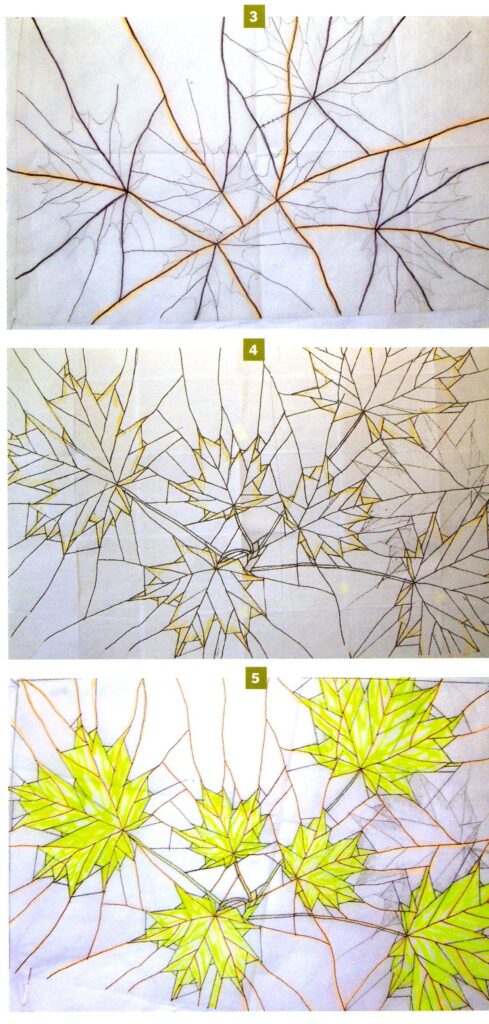
Of course there’s more to a McDowell quilt than the initial sketches, and you’ll find information about fabric selection, piecing considerations, and border choices for each quilt in the book.
Here are some of Ruth McDowell’s other books.
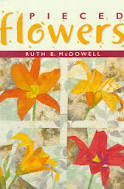
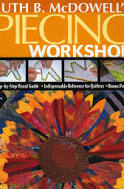
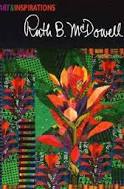
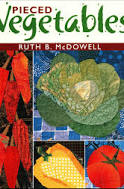
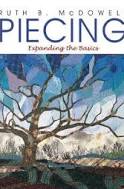
All of Ruth’s quilts are pieced, right-sides-together, with templates. This is a very particular technique, which has an enormous impact on her imagery. That is the technique that she teaches in her books. Also, as you see, nature plays heavily in McDowell’s choice of subjects, and I think you’ll enjoy seeing a few quilts on that theme. All of the photos, unless noted, are from McDowell’s website—a virtual show in itself.

“Witch Hazel Jelena”. International Quilt Museum Object Number 2006.011.0001 (See more IQM quilts at the link below).
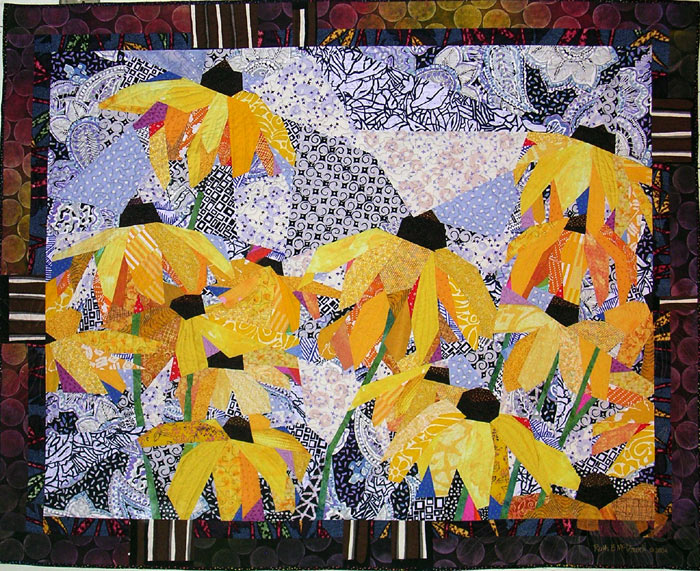
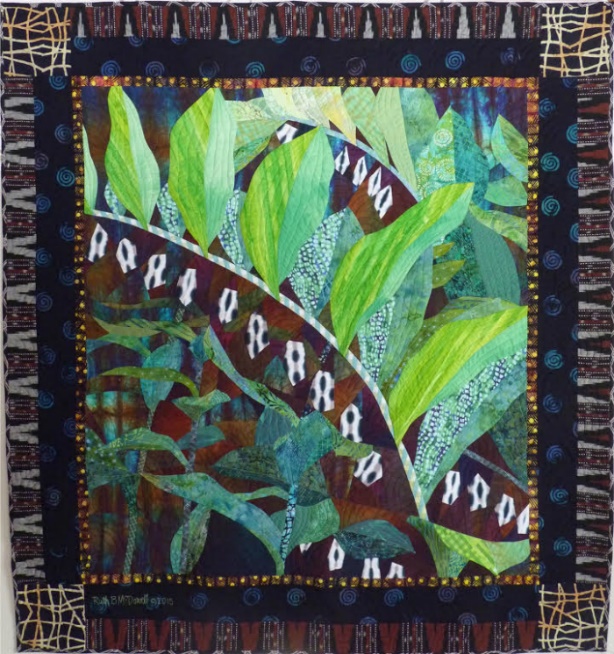
I chose these two because I have rudbeckia in my garden, but I am having no success in establishing the Solomon’s Seal. And the one below, Rue, is a plant that was reputed to repel evil spirits (not that I would want to repel “The Thread Witch”, but I did grow rue at one time).
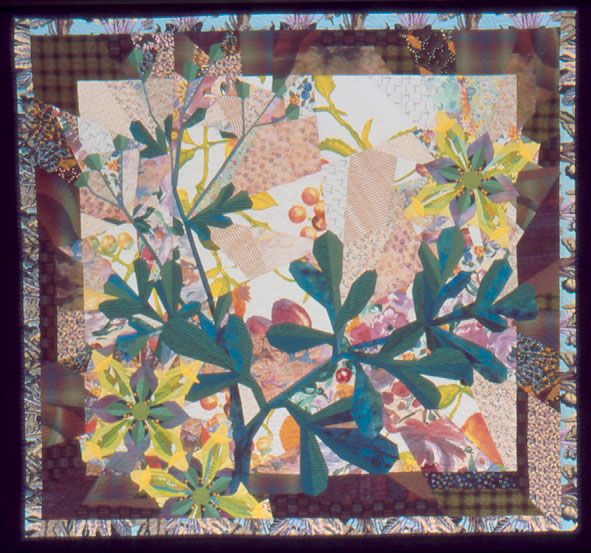
Farm life seems to be another area of interest for McDowell. It’s one thing to capture a leaf in a line drawing and turn it into a quilt, but quite another to capture muscle, movement and personality. McDowell can do it!
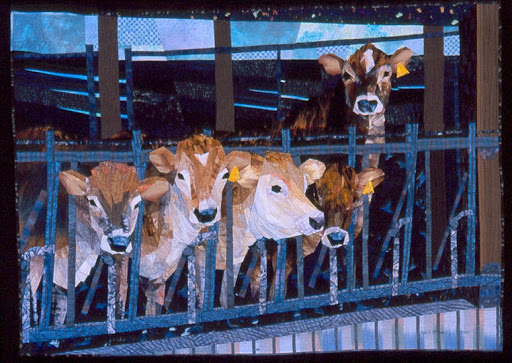
Fort Morrison Jerseys ©2003 RuthBMcDowell
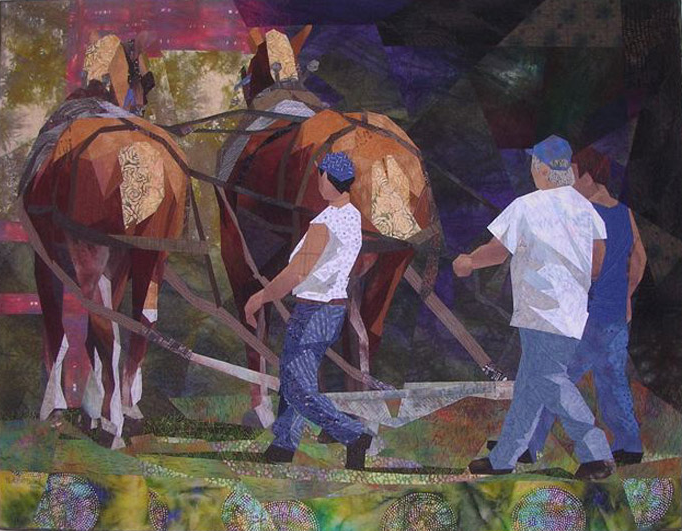

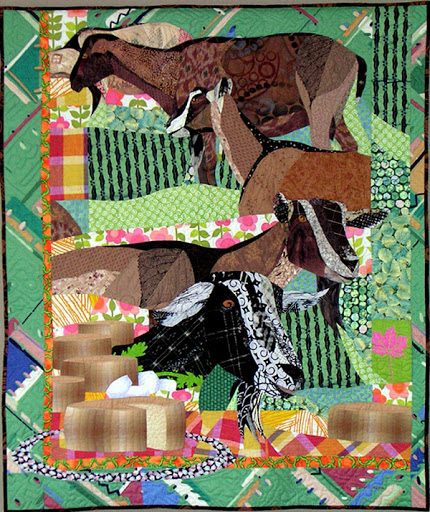
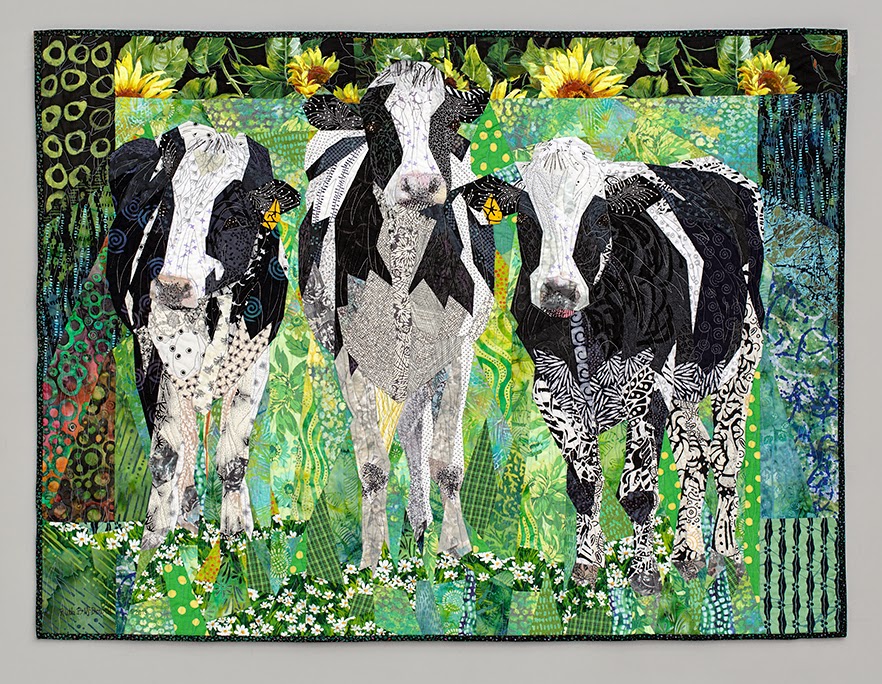
She can also do architecture—which should be no surprise given her skill with line drawing and her background as a technical illustrator. But these quilts aren’t just blueprints in fabric; I can smell the mustiness and feel the age of the wood.
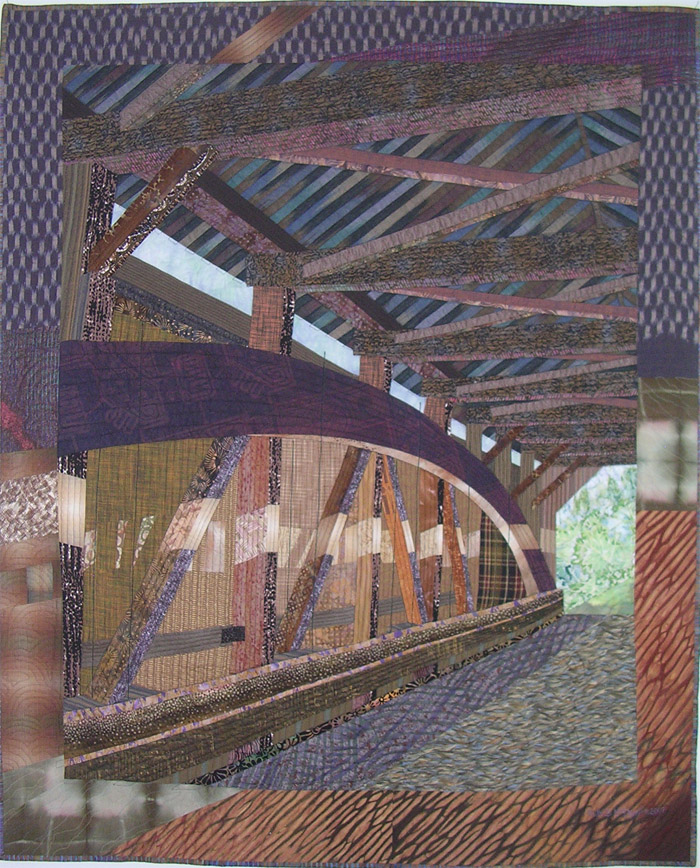

If you’re not already impressed with Ruth McDowell, let me tell you a few other things. She has had numerous solo exhibits in the US, and has been featured in invitational art quilt exhibitions in this country, Japan and Germany. Like several other Honorees, she was chosen for inclusion in “The 100 Best American Quilts of the Twentieth Century”, but in her case, it’s for two quilts, not just one. She has quilts in the permanent collections of many museums, and her work is also in corporate and private collections. You can read more about her life and achievements on the Hall of Fame website.
I’m going to leave you with one more McDowell image. This one is perfect for this time of year. And there’s nothing witchy about it.

“Sunshine and Shadow: Maple Leaves”. International Quilt Museum. Object Number 2008.040.0228. Byron and Sara Rhodes Dillow Collection
Your quilting friend,
Anna
International Quilt Museum McDowell quilts: https://www.internationalquiltmuseum.org/search/node/Ruth%20B.%20McDowell
McDowell’s quilts for sale: http://www.ruthbmcdowell.com/clients/rbm/catalog.cfm Navigate from here to other parts of the website to see more quilts.
More bio information: https://quiltershalloffame.net/ruth-b-mcdowell/
Even more quilts on Facebook: https://www.facebook.com/Ruth-B-McDowell-303778260912